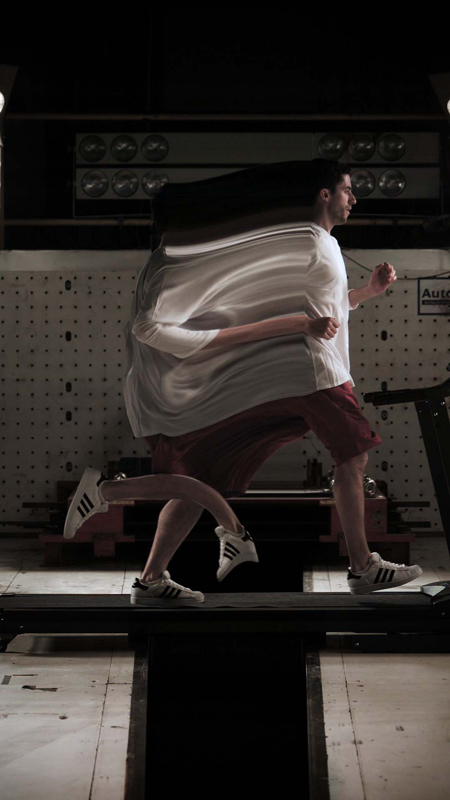AustLit
-
Daniel Crooks works across a range of digital media to challenge our perceptual understanding of motion. His art practice blurs the line between still and moving image, dissecting and distorting the physiological intricacies of motion that exist below the threshold of normal perception.
Static no. 11 (Man running) is intrinsically informed by a correspondence between sport and art. Created for submission to the Basil Sellers Art Prize - an initiative to promote critical reflection on sport and sporting culture in contemporary art - the work is considered both theoretically intriguing and visually dynamic.
The four and a half minute video piece features just four seconds of original footage. Filmed by a high-speed camera, capturing 800 frames per second, this four-second clip features a man running at high speed on a treadmill. Echoing the experience of a slow-motion replay in televised sporting events, Crooks captures the suspense of the “finishing-line moment” by depicting this physically intensive moment in extreme slow motion. In doing so, the viewer is made hyper-aware of the physics of motion, the actions and reactions that facilitate kinesis.
In the first 45 seconds, the running man appears true to life, albeit in a state of heightened reality. Near-perfect symmetrical composition and a largely greyscale palette create an atmosphere of scientific authenticity. The only source of motion and visual interest is the running man, forcing the viewer to be aware of and to appreciate the minute details that would otherwise go unnoticed by optical perception: the billowing of the man’s loose running clothing, an innate tension and release as he shifts weight from one leg to the other, the subtle shifts and ripples of his musculature. The score creates a sense of heightened anticipation and expectation, reminiscent of the ‘photo-finish’ moment at the culmination of a race.
At the 45 second mark, there is a perceptual shift. The first moment of distortion occurs almost as a technical glitch: a fissure that runs through the vertical axis of the frame. The runner’s torso stretches impossibly; his shin fragments and his foot becomes removed from his form to exist as a separate entity. The body refracts and expands, extrapolating the fluidity and grace of his human motion to create impossible contortions. This evolutionary process slowly progresses until the meta image is completely distorted.
This initial moment of ‘fissure’ challenges our ocular expectation of motion: Crooks both renders the experience of space and time in a tangible form whilst calling into question the ways in which we make sense of it. Crooks explores not just the physicality of motion, but the temporal structure surrounding how we experience it. By relating the passage of time to a spatial dimension, the linear progression of time becomes tangible, a material element to be de- and re-constructed.
The way the viewer perceives the first image of the running man is (literally) pieced apart until the original form is imperceptible and - while the image is always in motion - by the end, there is no human movement at all.
You might be interested in...




